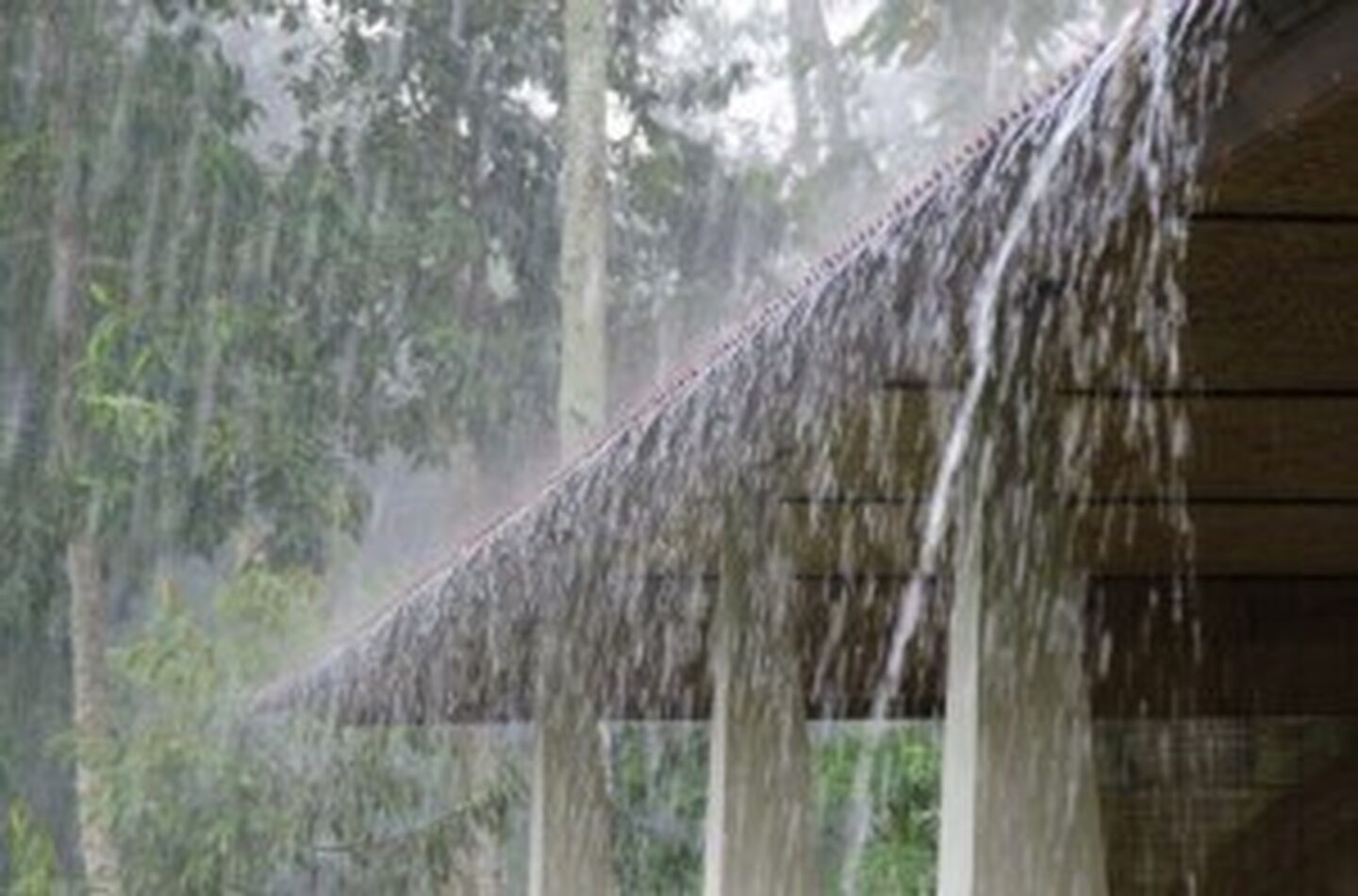Water in the Basement – Rain is Only Part of the Problem

For a homeowner who has had trouble with water in the basement or who suspects they might, rain is always a bad sign. A forecast of heavy thunderstorms or a few days of persistent drizzle will often be the cause of frequent treks down the basement stairs to see if anything is happening.
When seepage does happen it often occurs during or after heavy rainstorms, which seems pretty logical. What many homeowners don’t realize, however, is that rain is only part of the cause of water in the basement and that it may not be as big a problem if other factors have already been addressed.
Water in the Basement Often Starts on the Roof
Rain falls on all sorts of surfaces. Some, like soil or sand, are absorbent and soak up the water; others, like asphalt or concrete paving and roofs, are impervious and cause the rain water to run off elsewhere.
The roof on a home is usually designed with a pitch or angle to allow rain to run off and is equipped with a system of gutters to carry rain water to a downspout that drains it to ground level.
Many homeowners are surprised by the amount of water that ends up on their roof when it rains – approximately 600 gallons per 1,000 square feet from one inch of rain. A typical newer suburban home in the Chicago area, for example, with total square footage of 2,500 – 3,000 in two stories, can have 1,300 to 1,600 square feet of roof and that’s 800 – 1,000 gallons of water per inch of rain.
If the home’s gutters are properly designed and are kept clean and flowing, even this amount of rain shouldn’t cause water in the basement. If, however, the gutters are clogged, all that rain water will sheet off the edges of the roof and end up in the ground right next to the foundation.
It also follows that if the downspouts to which the gutters are connected are discharging onto the ground in the same area, all that water will be concentrated on the soil at the corners of the home.
Why is this water in the area next to the foundation such a problem? Let’s look at those other factors mentioned earlier.
Water in the Ground = Water in the Basement
Water exists naturally in the ground at varying levels usually determined by geographic and topographic factors. The level this water reaches is called the water table, which can be affected by the soil absorbing extra water from rain or snowmelt.
The area surrounding a home’s foundation is likely to affect the water table during periods of heavy rain because it is very absorbent due to the fact that a ten-foot band around the house is where the original excavation was made to build the foundation. Even after years, this soil remains more porous than the surrounding area because it was disturbed and backfilled, leaving it less compacted than the original undisturbed soil.
When this soil absorbs more water than normal, the water table can rise, which creates hydrostatic pressure under the foundation, and the soil around the foundation can expand to create lateral pressure on the foundation walls. In either case, pressure can force water into the basement.
Hydrostatic pressure will push water into the basement through the cove joint and/or cracks in the basement floor.
Lateral pressure from saturated soil can force water in through non-structural cracks in a poured concrete wall, cracked mortar joints in a masonry wall, through porous concrete or masonry units and opportunistic openings around utilities or basement windows.
Naturally occurring ground water can cause water in the basement even when it isn’t raining but the extra water from rain or melting snow just makes the situation worse. There’s not much that can be done about the rain that falls directly on the soil but keeping gutters clean and extending downspouts beyond that ten-foot zone will prevent rain that falls on the roof from ending up in the basement.
As for defending a basement against existing ground water, there are several remedies including interior and/or exterior drain tile, crack repair and exterior waterproofing membranes.
No matter if a homeowner already has water in the basement or is anticipating that they might, they will need the advice and services of a professional basement waterproofing contractor to keep the water out. At U.S. Waterproofing, we have been defending basements against water since our founding in 1957 and we have a list of satisfied customers that is more than 300,000 names long. Why not ask for our free advice?




